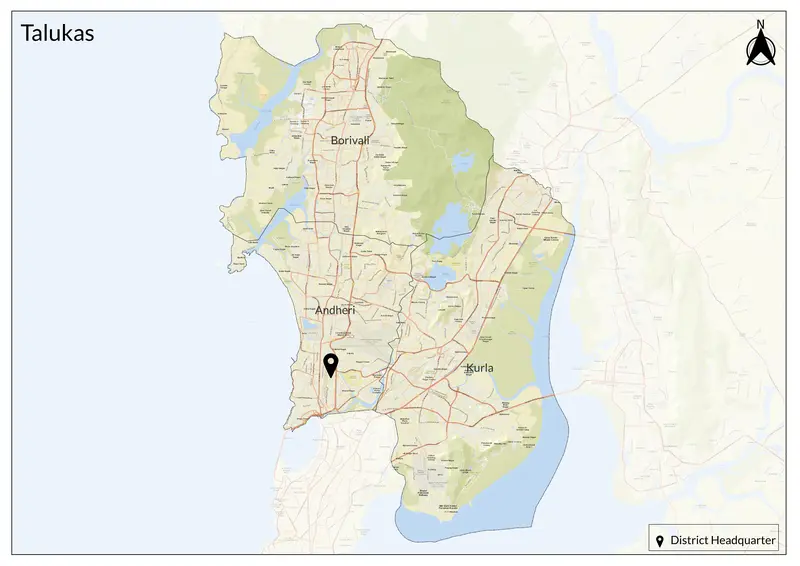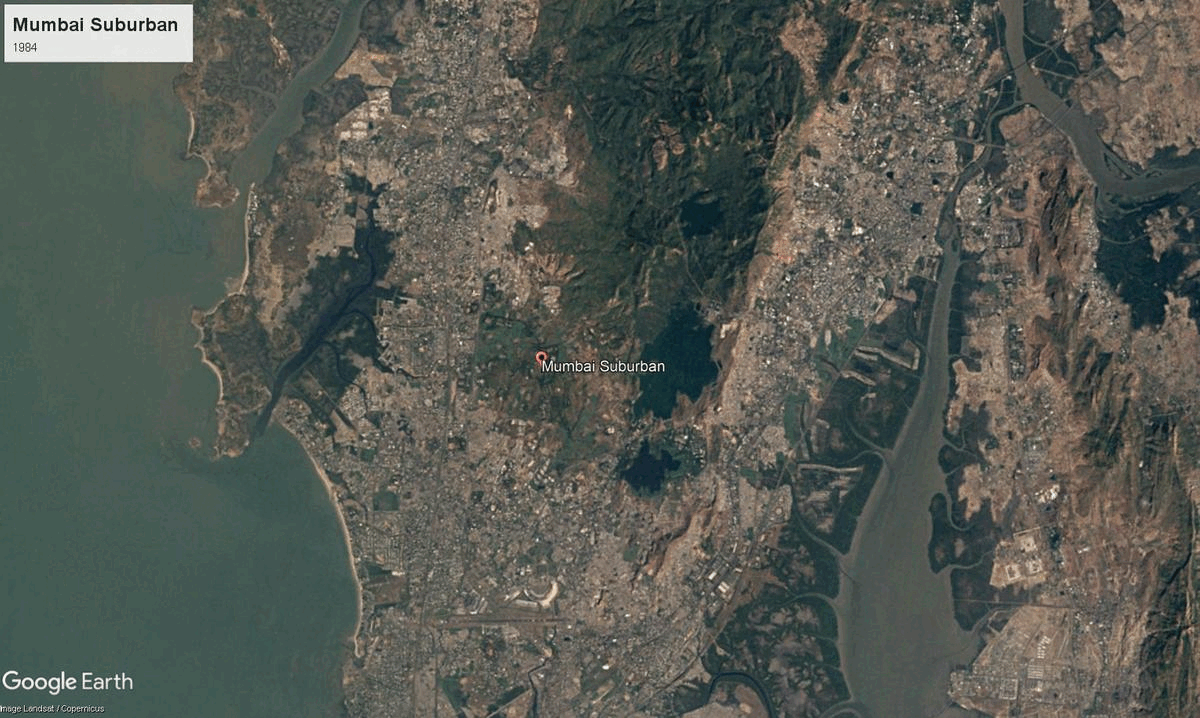Mumbai Suburban

446 sq. km
~ 93.56 lakh (2011)
860 (2011)
~ ₹4.44 lakh crore (2019) (combined figure for Mumbai City and Mumbai Suburban)
~ ₹3.11 lakh (2019) (combined figure for Mumbai City and Mumbai Suburban)
Mumbai Suburban district, sprawling across the northern and eastern tracts of Mumbai on Salsette Island, represents the city’s dynamic growth and modern spirit. It was carved out as a separate unit in 1990, with administrative headquarters at Bandra. Covering neighborhoods like Andheri, Borivali, Kurla, Ghatkopar, Chembur, Bhandup, Powai, and Mulund, this district is demographically India’s fifth most populous district. Historically, these areas were marshy villages and islands crisscrossed by rivers, salt pans, and mangroves, gradually urbanized through migration and massive real estate development, especially after the Mumbai railways and highways expanded in the 20th century.
The district developed rapidly in the post-independence era, transforming from rural villages, salt pans, and mangroves into urban neighborhoods and major commercial zones. With its growth accelerated by mass real estate expansion, suburban rail lines, and new infrastructure, the region is now a mix of residential, business, IT parks, industrial estates, retail malls, and Bollywood studios (Film City in Goregaon). Mumbai Suburban is a melting pot shaped by waves of migration. Marathi is the most widely spoken, but large communities speak Hindi, Urdu, Gujarati, Tamil, Telugu, Bengali, Konkani, and more. The district is a creative powerhouse, home to Bollywood’s Film City (Goregaon), music and dance studios, and thriving street food culture in areas like Juhu, Bandra, and Andheri. Landmarks include Mount Mary Church (Bandra), Mahakali and Kanheri Buddhist caves, Powai Lake, ancient temples (Mumba Devi, Siddhivinayak), the Bandra Fort, Marve/Aksa beaches, and heritage markets in Vile Parle and Chembur. It hosts festivals and fairs for virtually every community, reflecting Mumbai’s distinctly cosmopolitan soul.
Geographically, Mumbai Suburban includes much of Mumbai’s green and blue lung, the Sanjay Gandhi National Park, located entirely within urban boundaries and home to leopards, deer, birds, and ancient (almost 2,000 years old) Kanheri caves. The district encompasses river valleys of the Mithi and Poisar, lakes like Vihar, Tulsi, and Powai, salt pans, and mangrove belts. Aarey Colony is one of the city's unique green zones amid concrete sprawl. Beaches from Gorai and Versova to Juhu and Aksa offer popular escapes, while slums, high-rise apartments, tech parks, and gated communities reflect the city’s contrasts.
The economy is driven by a mix of traditional industries (textiles, film studios, fisheries), modern IT and BPO parks (SEEPZ, MIDC), logistics, aviation (Mumbai International Airport at Sahar), retail markets, hospitals, schools and universities, and dynamic informal business networks. Bandra-Kurla Complex, the district’s premier business hub, anchors financial and corporate activity. Redevelopment, affordable housing schemes, and infrastructure projects continue to transform the district.
